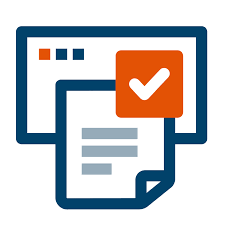Lessons Learned from Decades of ECM Implementations
- Tom Ziencina

- Jul 13, 2021
- 2 min read
Updated: Jul 15, 2021

At this point in time, we’ve been talking about ECM technology for about 25 years. The scope has undergone many, many, many updates as document management enfolded business processes and capture technologies became enterprise content management. Today with the emphasis on the process and AI components some would argue the term, content services is more accurate, but at CPS we prefer to use ECM.
In the years since ECM was developed, we’ve learned a lot about how to implement it. Here are a few of the biggest lessons.
UX is the last mile
One critical lesson is the importance of user experience. Nien-Ling-Wacker (founder and developer of Laserfiche) used to explain that most developers can build a rough content management system but the hard part is making it easy to use. That’s the last 10% and most cannot get it there. The UX needs to be designed around the prevailing task (business process) and that’s why our clients partner with CPS for our workflow skillset and our expertise in designing mission-based applications. To simplify, we build user-friendly, workflows that help you get stuff done.
Metadata modeling matters
We’ve pushed this concept since our inception and we’ve written about it quite a bit. One of the first exercises we conduct with new clients who already have Laserfiche is a systems check (audit). While we audit the entire system, changes in metadata and metadata strategy tend to be where we get the most impact (other than automation). The current way to think about metadata isn’t a long list of template fields but as a model. Meaning fewer templates and selecting metadata that reflects the tasks at hand. The system that results from this approach is much more flexible and can easily be adapted to new integrations or additional workflow process enablement.
ECM is a verb
We can all agree that ECM is how you capture, process, store, capture, and manage records. However, you are never actually done managing content, because there are always more controls that need to be put into place. Also, don’t think of ECM as a static place where content goes to die. ECM is where active content resides from the cradle through its final disposition. Remember the volume of content is rapidly increasing, and more content formats are emerging regularly.
One other idea comes to mind when I think about ECM as a verb. In the old days, we’d tell the client/advocate that they just needed to get one department up and running and the rest of your department heads will want Laserfiche too. Nowadays we tell them a process is more likely to reveal the ROI and capabilities of ECM. Especially if it is a process that services multiple departments such as records request, customer onboarding, employee onboarding.
Local agencies, we’ve got a cool webinar about automating public records requests. It’ll help speed up process time and ensure proper scrutiny, security, and compliance. You can register here.



Comments